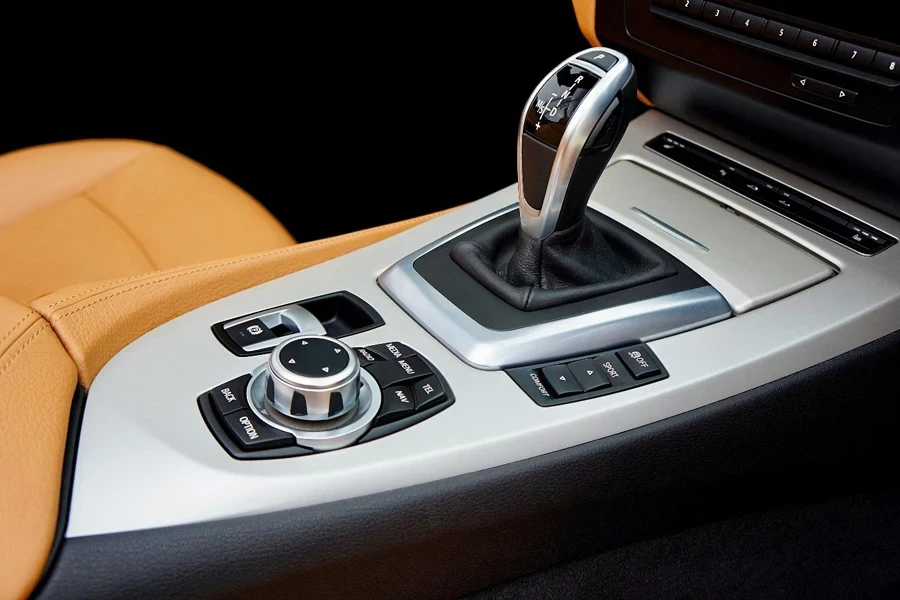Table of Contents
● Introduction
● Market overview
● Different types and their features
● Things to consider when selecting products
● Conclusion
Introduction

Gearboxes help transfer power and improve vehicle operation. The car gear drive sector is expanding due to technological advancements and the rising number of vehicles being made. It’s important to know about the kinds of gear systems, like manual and automatic ones, to make sure that cars perform well and use energy effectively. Picking the transmission involves looking at costs for upkeep and compatibility with current technology trends. This detailed article delves into the trends in the market related to automotive gearboxes, including various types available along with their features and important factors to consider when selecting one for your vehicle.
Market overview

The automotive gearbox market in 2023 was valued at $21.5 billion. It is predicted to reach $34.61 billion by 2030, growing at a CAGR of 7.75%. This growth is brought about by shifts in technologies such as dual-clutch transmissions (DCT), continuously variable transmissions (CVT), and automated manual transmissions (AMT). They have improved performance and fuel consumption, making driving more enjoyable. Car production is increasing globally because the demand for passenger, commercial, and electric cars is high. They are also helping to stimulate market growth.
Consumers increasingly opt for acceleration and improved fuel efficiency in vehicles. They are also seeking better-driving performance due to stricter emission regulations and the growing popularity of electric and hybrid cars.
Different types and their features

Manual transmission
Gearboxes with transmissions require the driver to operate a clutch and gear stick manually to shift gears smoothly without grinding noise or vibration during gear changes. These manual transmission systems are designed with mechanisms like synchromesh to synchronize the gear speeds and avoid rough gear engagements. There are types of manual transmissions, such as sliding gear transmissions, where gears move along a shaft to engage with one another smoothly, and constant mesh transmissions, where gears are always involved using a dog clutch to shift between them seamlessly.
Dual clutch transmission (DCT) automatic
Dual-clutch transmissions use two clutches – one for gears and another for even gears – to allow for pre-selection of the next gear for smooth and quick gear changes. There are two types of DCT systems: dry and wet DCT systems, which are immersed in oil and can manage higher torque levels. Dry DCT systems are lighter and more efficient for applications with torque requirements. The swift and seamless transition of DCT systems boosts effectiveness and fuel economy; however, the intricacy and quantity of parts raise production and upkeep expenses.
Torque converter automatic
Automatic transmissions, with torque converters, utilize a coupling known as a torque converter to connect the engine to the transmission system efficiently and smoothly. The setup consists of an impeller, turbine, and stator collaborating to deliver torque amplification and seamless power transmission. The capacity of the torque converter to boost torque during engine speeds enhances acceleration and overall driving experience. This transmission type is known for its reliability and ability to provide gear shifts without requiring a clutch pedal. It is well-suited for various driving scenarios.
Automated manual transmission (AMT)
Automatic manual transmissions are formed by merging a manual gearbox with automated gear selection technology aided by actuators controlled by an electronic control unit (ECU). These actuators manage the clutch and gear changes without requiring a clutch pedal using electro-pneumatic systems to ensure precise control. Through this setup, the system maintains the simplicity and efficiency of manual transmissions while providing user-friendliness with automatic transmission.AMTs are known for being budget-friendly and offering fuel efficiency. Still, they may fail to deliver the same smoothness and comfort as other automatic transmission options.
Continuously variable transmission (CVT) automatic
Variable transmissions offer a wide array of gear ratios by utilizing a setup of pulleys along with a belt or chain system in place. The sizes of both the secondary pulleys adjust to alter the gear ratio smoothly. This enables the engine to function at its revolutions per minute for different driving scenarios, leading to enhanced fuel economy. Incorporated in CVTs is typically a torque converter for starting acceleration and controlling torque distribution effectively. While continuously variable transmissions (CVTs) improve power and fuel efficiency, they may occasionally seem interactive. This is because of the absence of noticeable gear shifts and the possibility of belt or chain system wear over time, necessitating upkeep.
Things to consider when selecting products

Purpose and vehicle type
When choosing a gearbox for a vehicle, it’s important to consider the needs of the vehicle type. For instance, passenger cars often do well with dual-clutch transmissions (DCT), offering quick gear changes that make driving more enjoyable. On the other hand, commercial vehicles need durability and the ability to handle heavy loads. They might opt for torque converters or automatic transmissions because of their high torque capacity and reliability. When it comes to sports cars that demand fast acceleration and performance, they typically go for DCT due to their quick shifting and high power capabilities. Electric and hybrid vehicles often utilize variable transmissions (CVTs) to ensure smooth acceleration and enhance the efficiency of the electric motor.
Driving conditions
The type of gearbox you choose is heavily impacted by the driving conditions you encounter. In city driving with stops and starts in traffic jams, automatic transmissions like torque converters and AMTs offer a smoother experience by removing the need for constant clutch use and gear changes. On highways, with speeds, CVTs are preferred as they constantly adapt the gear ratio to maximize engine performance and fuel economy. Torque converters perform well in hilly or mountainous areas because they can manage high torque levels without the risk of stalling out on steep inclines and offer a smooth and robust driving experience uphill.
Cost and maintenance
Cost and upkeep factors play a role in choosing the right gearbox option. Transmission selection has comparatively simple mechanics, making them less costly initially and easier to maintain due to fewer parts and uncomplicated repair processes. Automated Manual Transmissions (AMTs)automate gear shifts while maintaining cost effectiveness compared to manual transmissions. On the other hand, Dual Clutch Transmissions (DCT) and Continuously Variable Transmissions (CVTs), although offering superior performance features compared to AMTs, involve higher production expenses and more intricate upkeep procedures. DCT systems, with their twin-clutch setup, necessitate precision but can be expensive to fix. Regular checkups and replacements might be necessary to ensure that Continuously Variable Transmissions (CVTs), which use belts and pulleys in their mechanism, sustain optimal performance levels.
Fuel efficiency
Fuel efficiency plays a role in today’s context due to the rising fuel cost and the need to comply with environmental standards. Continuously Variable Transmissions (CVTs) are engineered to maintain the engine at its optimal RPM level to deliver fuel economy benefits. Dual Clutch Transmissions (DCTs) also contribute to fuel efficiency by cutting down shift durations and minimizing energy loss during gear shifts. Manual transmissions offer a balance of fuel economy when operated skillfully, as drivers have direct control over gear changes. Automatic torque converters have traditionally been less fuel-efficient than variable transmissions (CVTs) or dual-clutch transmissions (DCT). However, they have seen considerable advancements with the introduction of modern lock-up mechanisms that minimize slippage and improve fuel efficiency.
Technological compatibility
Modern cars have driver assistance systems (ADAS) and other high-tech features requiring gearboxes to work seamlessly for optimal performance. Dual-clutch transmissions (DCTs) and torque converter automatic transmissions are fit for integration with ADAS functions like adaptive cruise control and lane assistance. They can swiftly react to signals from ADAS systems to offer precise and smooth control. Ensuring the gearbox can work well with both upcoming technologies to uphold vehicle safety and performance standards is crucial.
Customization and preferences
Consumers’ choices and needs also influence the selection of gearboxes in vehicles. Car enthusiasts might lean towards transmissions for the hands-on feel and precision they provide. At the same time, some prioritize the ease of automatic systems. Continuously Variable Transmissions (CVTs) come with a mode that lets drivers mimic gear shifts for a more engaging driving experience. Dual Clutch Transmissions (DCTs) often come equipped with paddle shifters, allowing drivers to manually choose gears while still enjoying the perks of a transmission. Recognizing these preferences and offering choices can boost driver satisfaction and tailor the vehicle to specific requirements.
Conclusion

Choosing the ideal gearbox is essential for maximizing the performance and efficiency of a vehicle. Stay updated on industry trends and tailoring choices to suit vehicle categories effectively. Companies can make well-informed choices. It is important to consider factors such as functionality, driving conditions, expenses, upkeep requirements, fuel efficiency, and technology adaptability. This systematic strategy guarantees that the selected gearbox fulfills the vehicle’s specifications and boosts performance and driver contentment overall.




